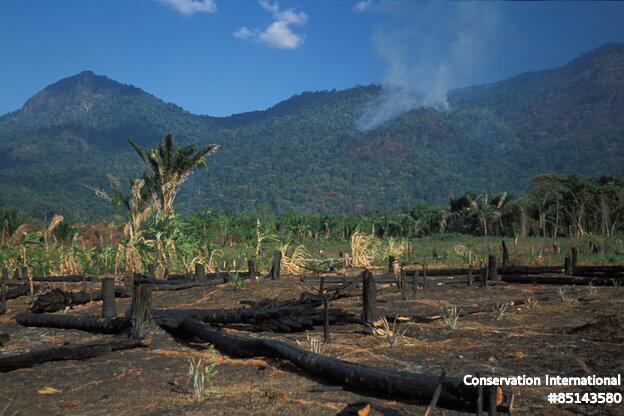Reducing wildlife trafficking and forest loss could prevent future pandemics

URBANA, Ill. – Governments might be able to prevent future pandemics by investing as little as $22 billion a year in programs to curb wildlife trafficking and stem the destruction of tropical forests, a new analysis by an international team of scientists and economists shows.
Compared to the $2.6 trillion already lost to COVID-19, and the more than 600,000 deaths the virus has caused so far, that annual investment represents an exceptional value, the experts argue.
They estimate that the total cost, in current dollars, of the preventive measures they recommend over the next 10 years is only about 2% of the estimated eventual costs of the COVID-19 pandemic, which some economists predict could top $5 to 15 trillion.
Amy Ando, professor of agricultural and consumer economics and co-director of the Center for the Economics of Sustainability (CEOS) at the University of Illinois is co-author on the study, which was led by scientists at Princeton and Duke universities. The team published its peer-reviewed analysis July 24 in Science.
“These preventive programs would only have to reduce the chances of another pandemic like COVID-19 by about 25% for their benefits in pandemic prevention to outweigh their costs – and the science indicates these programs will meet that standard of effectiveness,” Ando says.
Investments to conserve tropical forests and support reforms to cut the global wildlife trade (like suppressing the exotic pet and bush meat industries) are indeed likely to pay for themselves, as they make the difference between having another global pandemic and containing the next novel zoonotic virus, she notes.
In their paper, the experts note that COVID-19, HIV, Ebola and other viruses that have spread from animal hosts to humans over the last century have been linked to close contact between people and live primates, bats or other wildlife. In some cases, the animals have infected humans directly; in others, the route of infection has been indirect, through livestock the humans ate.
The paper’s authors also note that locations near the edges of tropical forests where more than 25% of the original forest has been lost tend to be hotbeds for these animal-to-human virus transmissions. For example, bats, which are the probable reservoirs of Ebola, and the virus behind COVID-19, are more likely to feed near human settlements when their original forest habitats are disturbed by road building, logging or other human activities. This has been a key factor in the emergence of viral outbreaks in West Africa, Malaysia, Bangladesh and Australia, says Andrew Dobson, professor of ecology and evolutionary biology at Princeton.
Wildlife markets and the legal and illegal trade of wildlife for pets, meat or medicine add to these risks by bringing humans into close – and often poorly regulated – contact with animals that may carry a virus, says Stuart Pimm, Doris Duke Professor of Conservation Ecology at Duke.
Their recommendations, which are summarized in the paper, include spending about $500 million a year to expand and enhance wildlife-trade monitoring programs and technologies, as well other programs and policies to reduce wild meat trade, tropical deforestation, and interspecies disease transmission.
Co-authors on the new analysis included environmental and medical scientists, economists and conservation practitioners from 14 institutions or nonprofits, including Conservation International; the University of California-Santa Barbara; Boston University; Arizona State University; the University of Illinois at Urbana-Champaign; Harvard University; Earth Innovation Institute; EcoHealth Alliance; the University of Wisconsin-Madison; and World Wildlife Fund International. Duke Kunshan University; Rice University; George Mason University; the Safina Center; and Federal University of Rio de Janeiro.
The paper “Ecology and Economics for Pandemic Prevention,” is published in Science. [DOI: 10.1126/science.abc3189]
Authors include Andrew P. Dobson, Stuart Pimm, Lee Hannah, Les Kaufman, Jorge A. Ahumada, Amy W. Ando, Aaron Bernstein, Jonah Busch, Peter Daszak, Jens Engelmann, Margaret Kinnaird, Binbin Li, Ted Loch-Temzelides, Thomas Lovejoy, Katarzyna Nowak, Patrick Roehrdanz,and Mariana M. Vale.